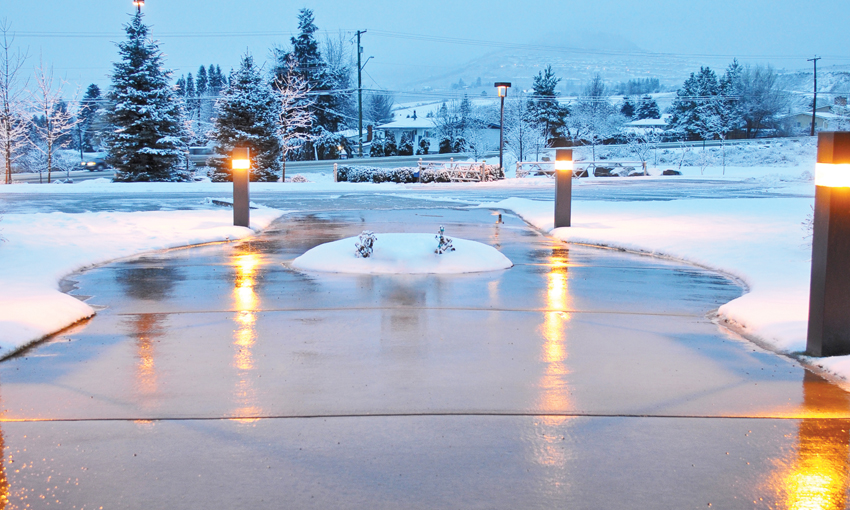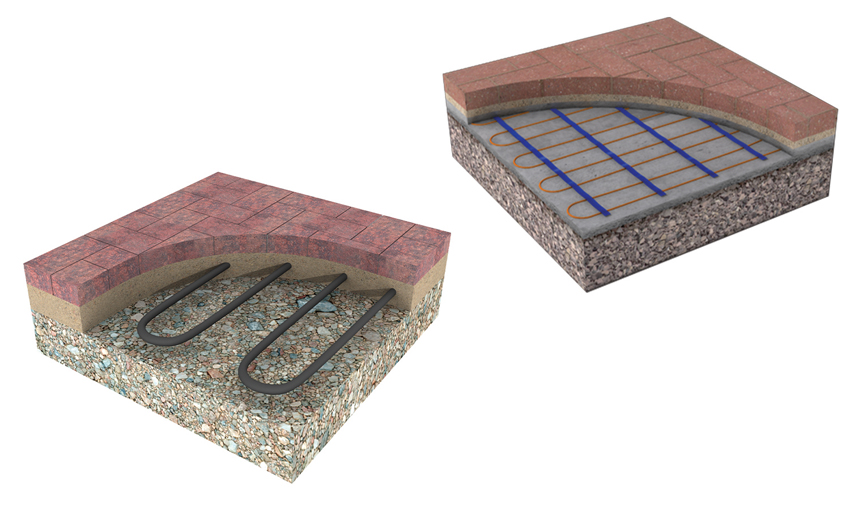Optimizing Snow-Melting Systems
Learning Objectives:
- Identify the primary characteristics of snow-melting systems, including the ways that they help protect building users, owners, and the public.
- Assess the design and performance considerations of both the buildings and their surroundings on successful snow-melting systems.
- Recognize the primary parameters for the design of functional hydronic and electric snow-melting systems.
- Investigate the range of options that are available for the control of snow-melting systems that help ensure the safety and well-being of people using the building or facility.
Credits:
This course is approved as a Structured Course
This course can be self-reported to the AANB, as per their CE Guidelines
Approved for structured learning
Approved for Core Learning
This course can be self-reported to the NLAA
Course may qualify for Learning Hours with NWTAA
Course eligible for OAA Learning Hours
This course is approved as a core course
This course can be self-reported for Learning Units to the Architectural Institute of British Columbia
Providing safe pedestrian or vehicular access in cold weather to a building entrance, walkway, or critical operation area means minimizing or eliminating the presence of snow and ice in those areas. In some facilities, this is done manually by maintenance staff who clear snow, spread ice-melt chemicals, and work to maintain clear and safe passage. The expense, impact of chemicals, and difficulty in creating a consistently safe condition pushes many building owners and operators to look for other solutions. As such, mechanical or electrical snow-melting systems are often designed and constructed to be placed below concrete, asphalt, or other paved areas to help ensure that pedestrians, and vehicles are protected from the hazards of snow and ice accumulation. This course looks at the ways that design professionals can investigate, design, and optimize a snow-melting system suited to the specific requirements of a particular project. This approach helps ensure control of the initial and ongoing costs as well the proper, long-term performance of these systems that create safe, clear passage in what could otherwise be a hazardous condition.

Photo courtesy of Watts
Snow-melting systems provide a low-maintenance solution to create safe walkways and entrances that help with risk management for all types of buildings and facilities.
Snow-Melting Systems Overview
The basic function of a snow-melting system is to warm an outdoor surface to a temperature above freezing, allowing snow and ice to melt and drain away safely. That surface might be a walkway into or out of a building that sees many people walking there daily, such as a retail, hospitality, health-care, educational, governmental, or other type of building. Keeping such walkways clear of snow and ice reduces the likelihood that someone walking there will slip, fall, and become injured. The surface might also serve vehicles, not just pedestrians. These vehicles could be large, such as cars, trucks, or buses, or small, such as forklifts, dollies, or robotic carts. They could also be specialty areas, such as a heliport on a building, an emergency room entrance, or a critical operations facility. Regardless of the type of traffic, the goal is usually the same: keep the area clear and safe for usage when snow and ice would be otherwise present.
System Need
Snow-melting systems are sometimes viewed as a luxury item or as an extravagance. This would only be true if safety is not a concern or if there is no cost to maintain and clear areas of snow and ice. The reality is that all buildings need to protect the safety and welfare of the people using them, and there is always a cost of labor and/or materials to keep a building safely maintained. The risks and costs are higher, of course, in geographic locations where snow is more common or frequent, or where the number of people or vehicles is high. Hence, snow-melting systems should be appropriately looked at and evaluated for each project as an option that meets the needs of building owners and regulatory agencies for safety and maintenance in climates that receive snow or ice storms.

Images courtesy of Watts
Hydronic snow-melting systems (left) and electrical systems (right) work on the same principles, just with different components and design implications.
Environmental Impacts
Many people are concerned about the environmental impacts associated with any building system. These concerns are fully justified, although snow-melting systems have been shown to be part of the solution, not part of the problem. The truth is that they are one of the eco-friendlier options available since they can reduce or eliminate use of salt or chemicals being introduced into the environment. Snow-melting chemicals are commonly used by maintenance staff, but they too melt and run into drains and sewers, where they can do damage to vegetation and aquatic life. Snow-melting chemicals are also well-known for the damage they can cause to concrete and other paved surfaces, causing shorter service lives and the need for replacement. This replacement then adds more environmental burden compared to a longer-lasting solution for concrete and other paved surfaces.
By using heat in selected locations in a snow-melting system, the need for chemicals is eliminated, thus eliminating their impact on the environment and the buildings. Also eliminated are the labor and time needed to spread these chemicals. The heat aspect of a snow-melting system is also very manageable based on proper efficiencies and controls, just like any other mechanical system. Designed, installed, and operated properly, snow-melting systems can be very energy efficient, so the energy use and cost impacts can be properly accounted for and controlled. If the energy comes from a renewable, non-polluting source (i.e., solar electric, hydroelectric, wind, etc.), the environmental impact of the energy used is drastically diminished.
System Costs
The discussion of any building system cost should always include a review of not only first costs but also ongoing operating costs and the residual costs of an alternative. Often, building owners, especially residential ones, only take into consideration the initial cost of the system. In doing so, they fail to see the intrinsic benefits of a system that can prove to be much less costly over the life of the building. The cost of installation can be allowed for in the project budget and may in fact be a very small percentage of the total project cost. Similarly, the operating cost of a snow-melting system can be managed and accounted for so that it becomes an anticipated and controlled expense. All of these costs, although they may seem expensive at first blush, can be significantly outweighed by the benefits of less labor, less maintenance, less chemicals, less risk of liability, and less potential damage to building surfaces. By doing this type of review, some building owners ultimately conclude that they cannot afford the alternatives after all—it makes better economic sense to include a snow-melting system.

















